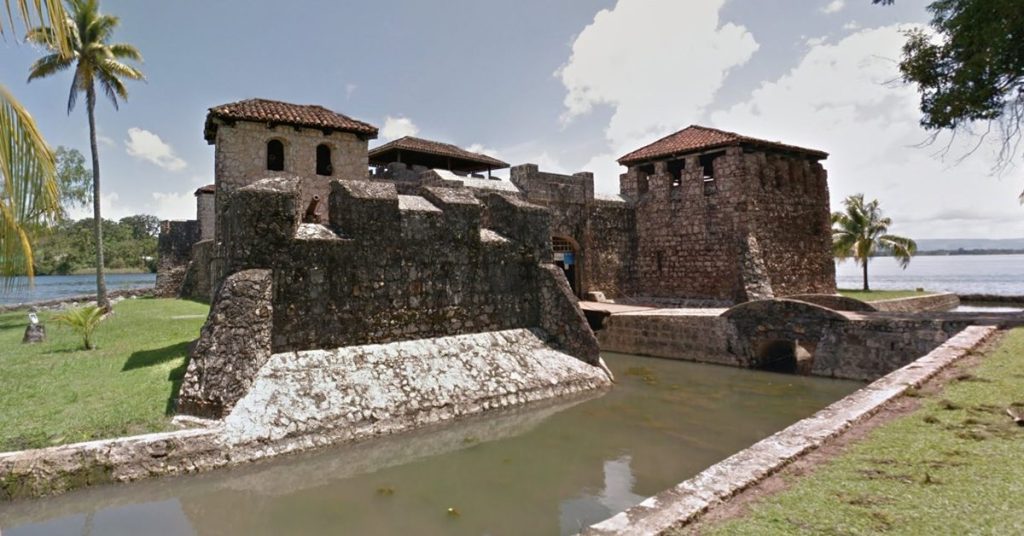In the heart of Izabal, where the serene waters of Guatemala’s largest lake meet the vibrant Río Dulce, stands a stone fortress that whispers over 400 years of stories about pirates, battles, and legends. The Castillo de San Felipe de Lara is not just a monument; it’s a time machine waiting to be explored.
If you’re planning a trip to this jewel of the Guatemalan Caribbean—a journey of approximately 6 hours (285 km) from the capital city—stay with us. We have combined the experiences of several travelers to bring you the definitive guide, complete with secrets and tips to make your visit unforgettable.
More Than a Castle: A Recreational Park on the River’s Edge
Before you even reach the stone walls, the journey begins in a lush park that functions as a true recreation center. Upon arrival, you will find several paid parking options nearby.
To enter the complex, you must pay an entrance fee, which typically has different rates for national visitors, children, and foreign visitors. We recommend checking the current prices before your visit, as they are subject to change.
The hours of operation are from 8:00 a.m. to 5:00 p.m. But what do you find before you get to the fort?
- Trails and Nature: Walk along paths surrounded by lush vegetation, where the tropical heat gives way to an unexpected freshness. The plants are properly identified for botany lovers.
- Views and Recreation: There are lookout points with direct views of the famous Río Dulce bridge, the longest in Guatemala. For the little ones, there are playground areas and zones with hammocks for resting.
- Pool and Beach: The site has a beautiful swimming pool and a small beach next to the lake to cool off after your tour.
- Restaurant and Handicrafts: In the main restaurant, you can find local dishes. You will also find stalls selling local crafts.
A History of Destruction and Rebirth
The castle’s history is as turbulent as the waters it once defended. Its existence is owed to the constant attacks by English pirates on Spanish trade routes.
- 16th Century: King Philip II ordered the construction of a first line of defense. The initial fortress, with only 12 soldiers and 12 pieces of artillery, proved insufficient.
- 17th Century: After being destroyed, the fort was rebuilt and expanded several times. One of its most important towers, the Torre de Bustamante (Bustamante Tower), is named after Captain Pedro de Bustamante, who led a reconstruction in 1604. The main structure we see today dates largely from the middle of this century (c. 1651).
- 20th Century: By 1955, the castle was in ruins. The architect Francisco Ferrús Roig undertook a monumental project: he traveled to the archives in Spain, located the original plans, and led the reconstruction that restored the fortress to its former glory.
Thanks to its incredible history and preservation, the castle was inscribed on the tentative list of UNESCO World Heritage Sites in 2002.
A Journey Through Time: Exploring the Fort
Prepare to get lost in its labyrinths:
- Defenses and Cannons: Imagine the main courtyard with up to 100 soldiers receiving orders. Today, you can admire the 19 cannons (17 of iron and 2 of bronze) that still point towards the river.
- Watchtowers: Climb the Torre del Comandante (Commander’s Tower) for a 360° view or dare to scale the Bustamante Tower. The passageways are so narrow and low that they sometimes feel like a trap, designed to catch any intruder.
- The Dark Secret: Prison and Torture: This is where the story turns disturbing. The chapel and the confessional are located right next to the prison. According to legend, this was intentional. In the cells below, where water seeps through the floor, it is said that prisoners’ fingernails and teeth were pulled out without anesthesia. The incredible acoustics of the place, which make one’s voice sound deeper and more resonant, carried the laments of the tortured directly to the ears of those confessing, pressuring them to reveal their secrets.
Practical Tips For Your Visit
- The Ideal Order: Due to the heat, it’s best to tour the castle first and save a dip in the pool or lake for the end.
- Comfortable Footwear: The floors are original and uneven. A good pair of shoes is essential.
- Talk to the Locals: The staff at the entrance and the local guides know the castle’s legends inside and out and are often willing to share them.
- Watch Your Head: The passageways are very narrow and low! Walk with caution.
An Adventure You Must Experience
The Castillo de San Felipe de Lara is an obligatory stop in Izabal. It is a place where history comes to life, nature embraces you, and adventure awaits in every dark corner. It is an experience that will leave you with indelible memories and the feeling of having traveled to a time of pirates, soldiers, and legends.

